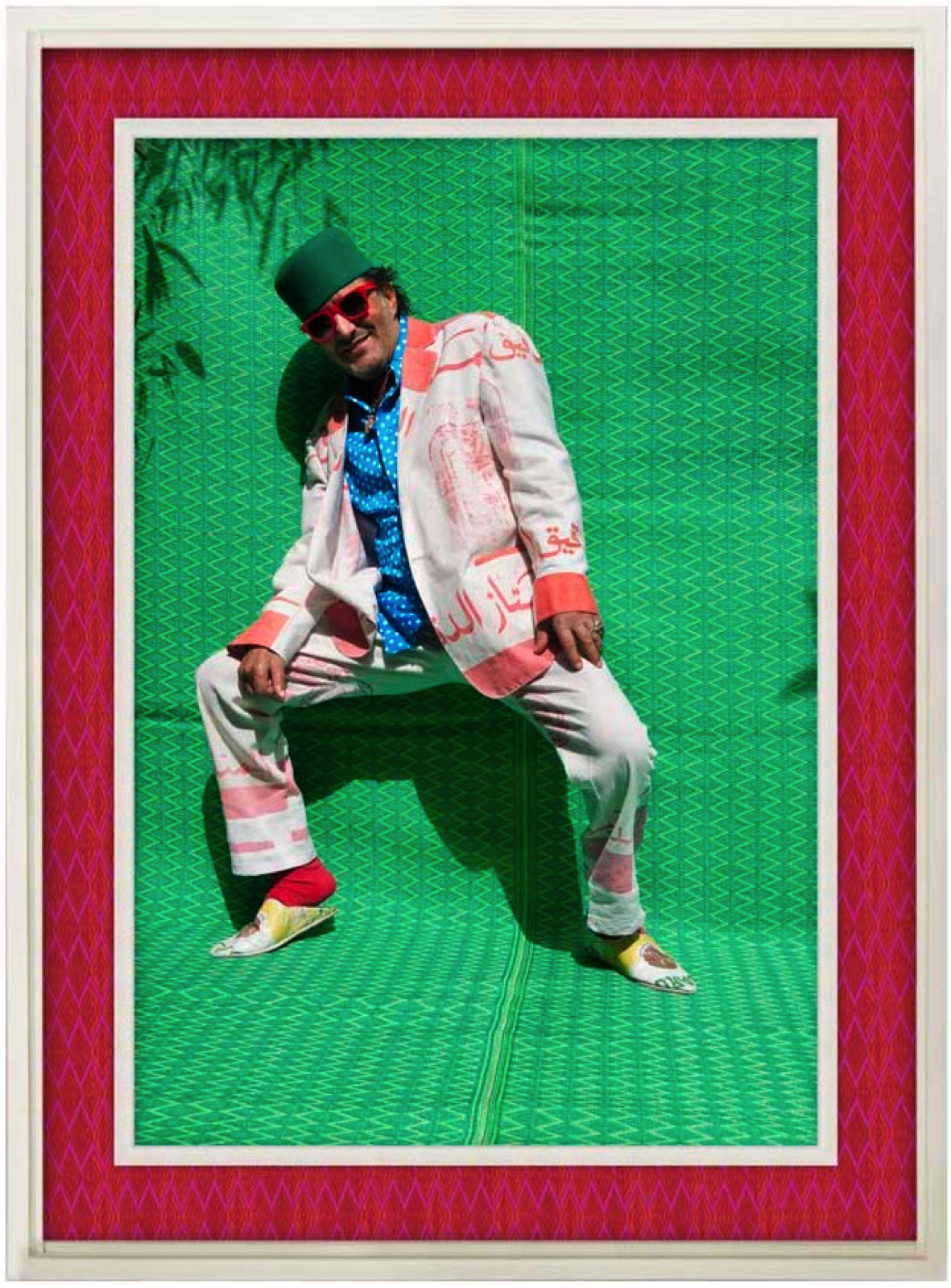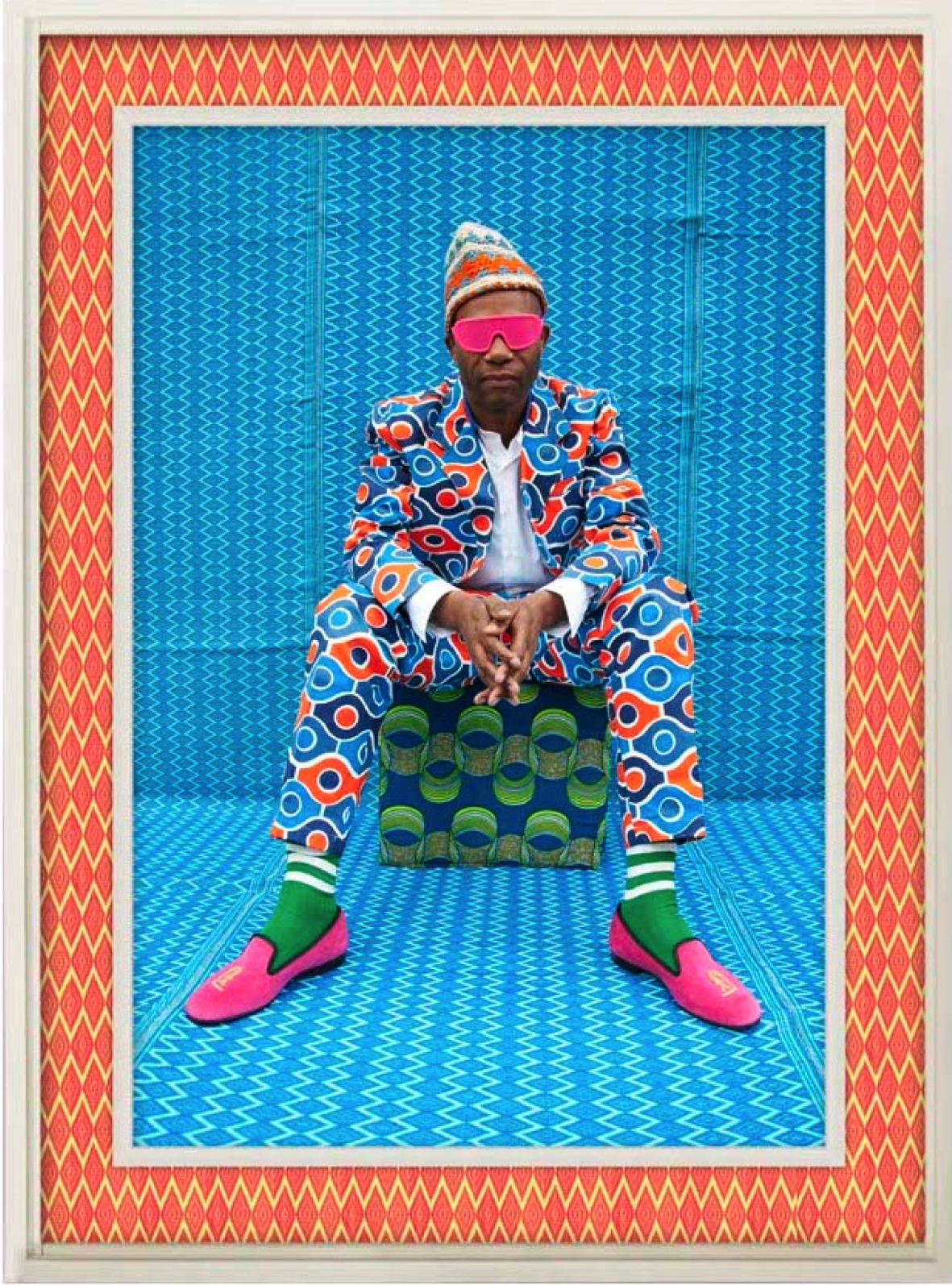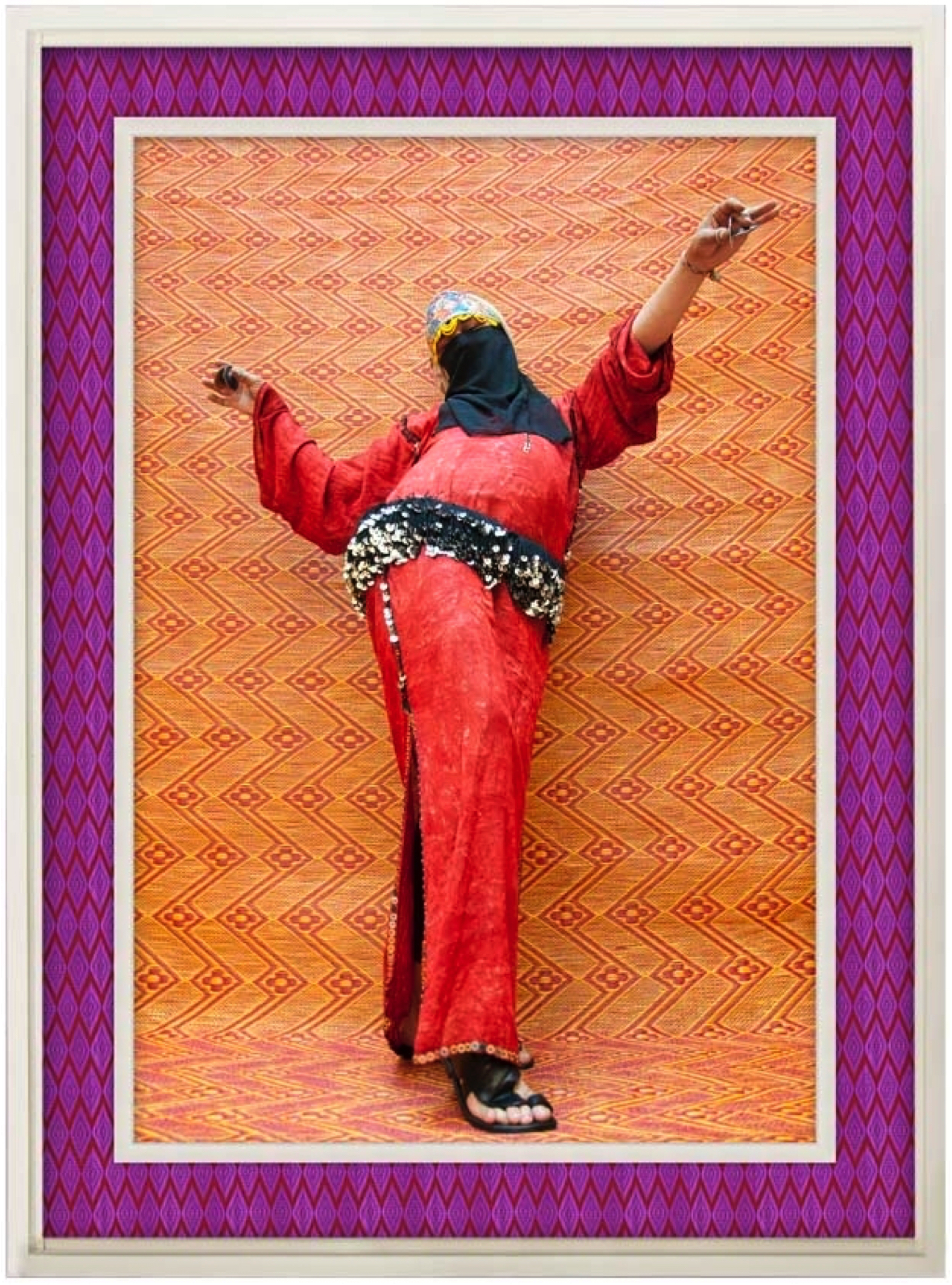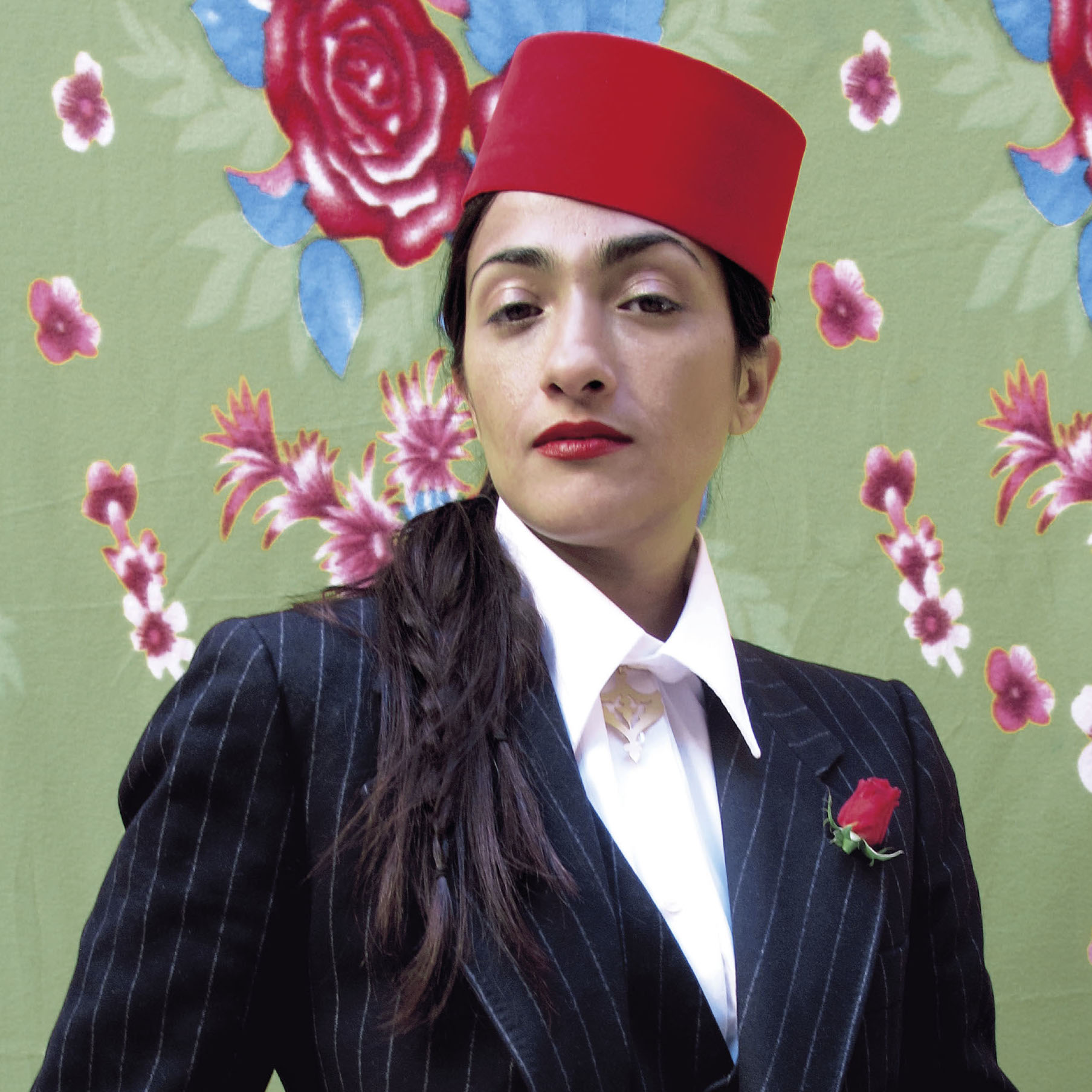The rock star is dead. Long live the rock star.
Photographs courtesy Hassan Hajjaj and The Third Line
As a child, you’re always pestered with the nagging, proverbial question of what you want to be when you grow up. On the surface, you say as you’re told, and simply follow the instructions on the tin – especially when you’re old enough to realise that many of the people asking you aren’t really interested in your juvenile fantasies, but are rather looking for a confirmation of their aspirations. Doctor? Afarin. Engineer? Ahsant. Lawyer? Zendebad! You spew out the golden answers by rote, get a pat on the head, and go to bed in the comfort of knowing your parents have yet to disown you, albeit with a sinking, churning feeling in your stomach, full of foreboding.
No, I didn’t want to follow the ‘respectable’ route laid out by the sages of old. I wanted to be Keith Richards. To a 12 year-old boy down on his knees in suburbia - to paraphrase Bowie - nothing was more attractive and alluring than the sight of that lanky, simian, ‘elegantly-wasted’ guitar slinger, who, in-between swigs of whisky, extolled obscure Delta bluesmen and conjured aphorisms in a drug-addled drawl. This was, of course, long before Scheherezade & Co. initiated my virgin senses to the wonders of the land of the rising sun, acquainting me with a magical cast of characters woven within the rich cultural tapestry of an ancient realm.
Having read a selection of tales from the Thousand and One Nights, I had reached the point of no return. What were the exploits of Ziggy and the Spiders compared with those of the death-defying Sindbad, the resplendent Haroun Al Rashid and his witty consort Abu Nuwas, and the ever-present band of jinns, sorceresses, princes, and bandits? A University freshman by day and wandering dervish by night, I ravenously sought out as many books, films, and records related to Iran and the Middle East as I could, never knowing where each discovery would lead me. Gradually, in light of my findings, I began to shun my Western identity in favour of my long-dormant Eastern one, as my toothless, former idols regarded me from afar on yellowed record sleeves, their cigarettes dangling from their lips.

Rachid Taha
It was then that my notion of the ‘rock star’ was forever revolutionised. Growing up in the West, I took it for granted that rock stars, or one’s idols for that matter, had to meet a number of essential criteria. For one, they were either English or American, with a preference for the former; second, they had been on a magazine cover, somewhere or other, and third, they could work a guitar. It had never occurred to me in the slightest that the people I considered rock stars or heroes could be Iranian or Middle Eastern, and that they need not sing songs peppered with vague references to hard drugs.
Looking at a scruffy, turbaned Rachid Taha, I saw my new rock star in all his glory
Looking at a scruffy, turbaned Rachid Taha on the cover of Diwan 2, I saw my new rock star in all his glory. That simple, yet iconic portrait of the artist as an Arab man spoke volumes. Here you had an established French artist in a post-9/11 Western world rife with suspicion about anything Arab or Middle Eastern, clad in traditional Algerian male dress, defiantly gazing into the distance. Having followed Taha’s career throughout the years, seeing him as a young punk with his outfit Carte de Séjour, and as a genre-defying peroxide blonde on the cover of Olé Olé, this was a statement, the like of which I’d never seen before. ‘Fuck you,’ he seemed to be saying, ‘I’m Arab’. Like the first album in the two-part series, Diwan 2 saw the artist give a selection of classic Arabic and Maghrebi standards the raunchy Taha treatment. It was something that was at once in-your-face and edgy, yet firmly rooted in culture and tradition. For a hip young guitar slinger (as the saying goes) in his late teens trying to assert his Iranian identity in a strange new world, Rachid Taha became the rock star par excellence. Who said only the Brits could rock and roll?
That being said, however, today’s definition of the ‘rock star’ is undergoing a facelift, extending far beyond the traditional notion of the actual rock musician. Writers, visual artists, directors, and other creatives are written about on the same pages as rockers, and the term ‘rock and roll’ has now become an adjective attached to just about everything. However, while the phenomenon of rock stardom has garnered much attention in Western literature, art, and film, it is something less-discussed in the Middle East. That’s not to say, though, that artists therein haven’t been exploring the subject in creative and novel ways.

Joel Casely Hayford
Perhaps no other artist within the MENA region has toyed with the notion of the rock star so much as the British-Moroccan artist Hassan Hajjaj. In his latest exhibition, My Rock Stars: Volume 1, which was on display this autumn at The Third Line gallery in Dubai, Hajjaj presented audiences with his idea of the rock star, and the concept of rock and roll. In Hajjaj’s signature pop art portraits, we see a stark contrast between the polarities of pop stardom and rock stardom. Unlike its sibling the pop star, shaped and confined by social expectations, the rock star as portrayed by Hajjaj is something of a free spirit. Hajjaj’s rock star does as it pleases, heedless of hearsay and slander. His is an iconoclast, giving the finger, Taha style, to those who stand in its way. This is a being unshaken by the ravages of time, defying practice, medium, and creed.
The rock star is a being unshaken by the ravages of time, defying practice, medium, and creed
The people featured in Hajjaj’s portraits are a diverse bunch, as colourful and iconic as the works themselves. True, there are actual rock stars (in the traditional sense) present among Hajjaj’s characters – such as Monsieur Taha and the Moroccan songstress Hindi Zahra – but for the most part, they’re a rather ordinary lot. Within the Arabic soda can frames which have become synonymous with his style, one beholds male belly dancers, boxers, DJs, fashion designers, and traditional gnawa musicians, among others, all clad in funky garb designed by the artist himself, with a palette of colourful backdrops behind them. According to the artist, the flamboyant use of colour in the portraits is a gesture intended to capture the essence of his vibrant childhood in Morocco, which he left for London at the age of 14. ‘I’m trying to create something which has as much of my identity as possible … something that is fresh in Europe and Africa … it’s like when you see the jars and the sweets in the shop as a child’, he remarked in a recent Guardian interview.

Man Bellydancer
The idea for the Rock Stars project was conceived in 1998 in Marrakech, where Hajjaj lives for a portion of each year. Whilst there, Hajjaj photographed people he met on the streets for research purposes – snake charmers, male belly dancers, local musicians, henna artists, etc. – and the rest, as they say, is rock and roll history. Though the various individuals who made their way into Hajjaj’s portraits have all served as sources of inspiration for the artist, it’s interesting to note, in light of his redefinition of the ‘rock star’, the artist’s own rock and roll status. Indeed, if there’s an artist that fits the bill of the rock star a la Hajjaj, it’s Hajjaj himself. While he’s become something of a household name in the Middle Eastern art scene, his route was that of the rocker, and one still, despite his recent success, can’t help but notice a trace of rebelliousness and raw authenticity in his work. Though he’s been based in London for the majority of his life, Hajjaj, like Taha (and of course, Hindi Zahra) is undeniably North African, and proud of it. At the same time, however, he doesn’t deny the English experience – which he has unabashedly embraced – and like his French counterpart, is thus able to create works of art which are every inch him, at once embodying the colour and vivacity of Morocco and the edgy East London aesthetic.
I’m not 12 years old anymore, and being Keith Richards isn’t exactly on my list of priorities. Reflecting on the work of Hajjaj and others such as Rachid Taha, the primitive notion of the rock star as I knew it is now nothing more than a kitsch novelty, and an anachronism of sorts. Rock and roll has always been about so much more than just a genre of music, as its very name suggests; it’s dynamic – a way of life. Rock stars can don dishdashas, sing in Swahili, and curse in Kabyle. They can be boxers, belly dancers, poets, and playwrights. Varying in outward form and appearance, they are singular in essence, united by the spirit of rock and roll – a spirit that knows naught else but passion, authenticity, and originality.
The rock star is dead. Long live the rock star.

